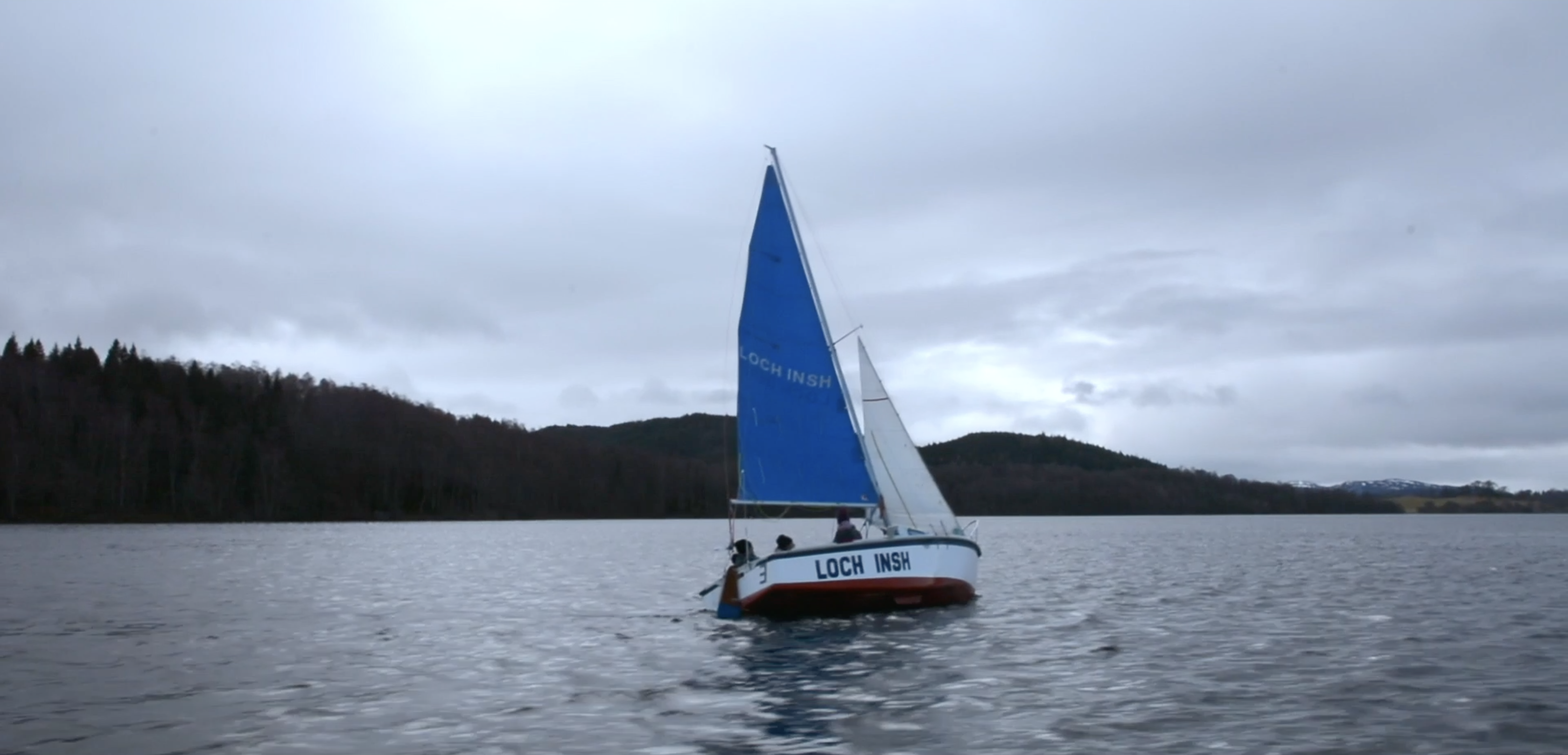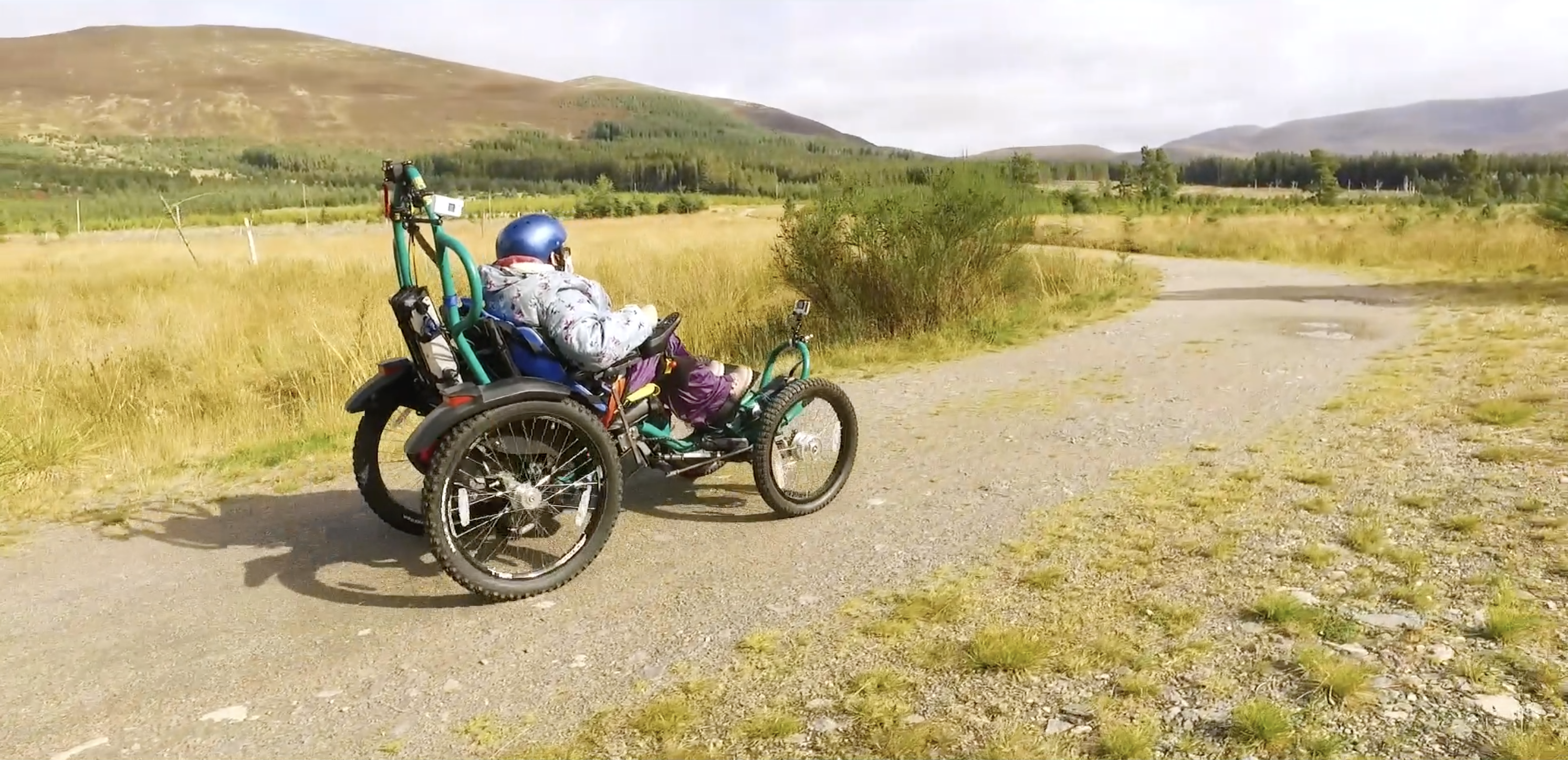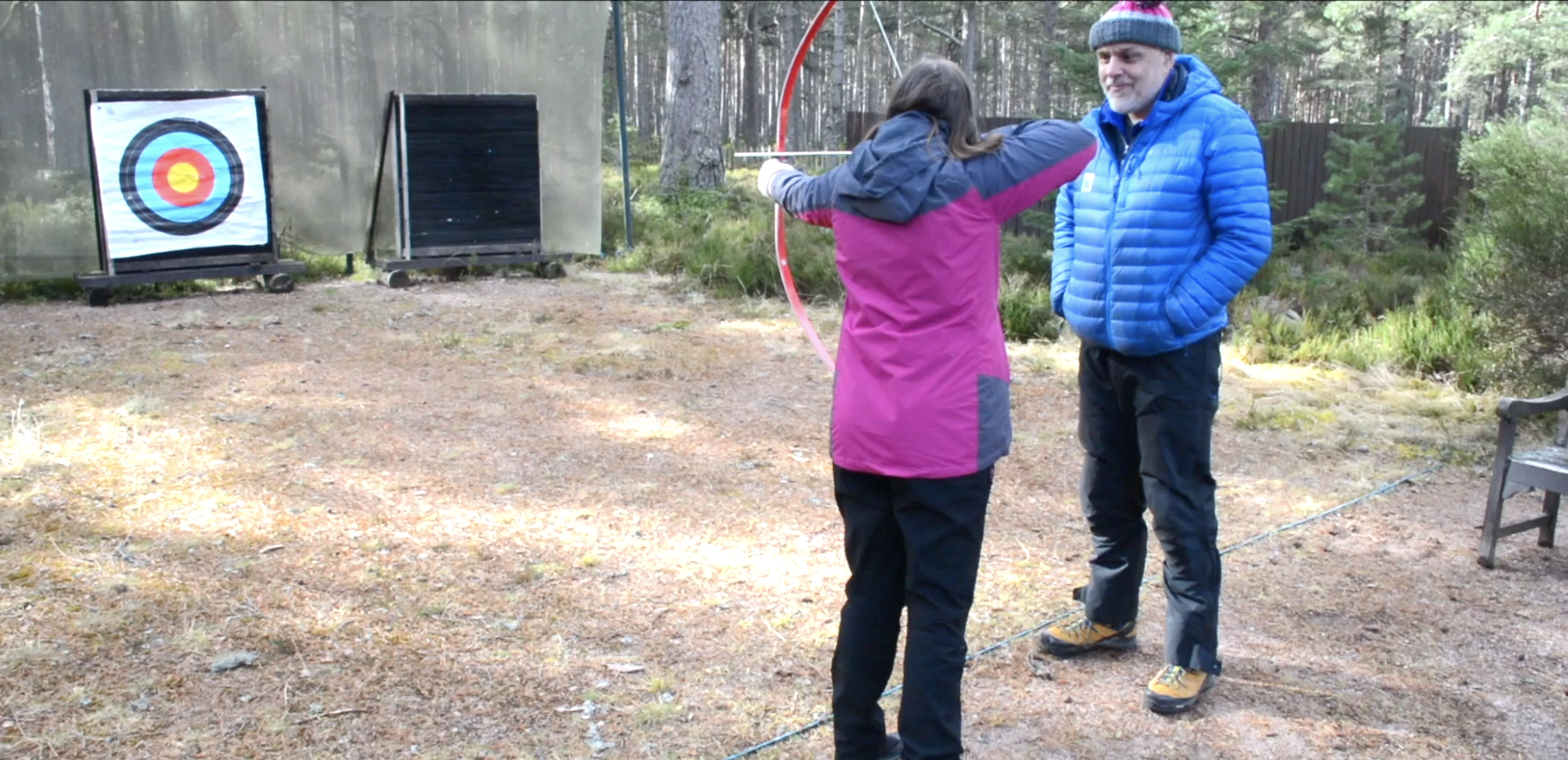A chilly day on the water at Loch Insh Outdoor Centre. An uplifting experience exploring what can be done with considerations to posture and using equipment to remove the interferences of discomfort. A morning paddling around using sit on kayaks and an afternoon sailing the Loch with guidance and instruction from Centre staff.
People
Although both participants had undertaken some outdoor activities before, health and other factors their own environments reduced their motivation to get out. The pivoting influence of being invited to participate on the day provided them both with an opportunity to rekindle their enthusiasm and regain some of the feelings and wellbeing gained from being in a nature filled environment.
Carol-Anne and Jamie are independent individuals, with capacity and more than able to take control of their own direction, however support with logistics and transport to the venues was provided by Spina Bifida and Hydrocephalus Scotland’s Family Support Worker, Sophie Tear.
Planning
The activities were facilitated by the Loch Insh Outdoor Centre set on the edge of the beautiful Loch Insh. The day aimed at providing the opportunity for other providers to showcase their inclusive practices whilst maintaining a certain amount of continuity of voice with regards to the reflective aspects of the day and the overall considerations to encouraging and inspiring people get into, or in the case of Caro-Anne and Jamie get back into, activities outdoors.
During the planning stage, discussion with centre staff provided an opportunity to on-board everyone involved, clearly identifying roles and responsibilities to ensure that centre staff could operate without hindrance and with autonomy to run a session as they would without a camera crew present. With this in mind one of the focusses of the day was to look at equipment that might provide postural support in activities that involve considerations to an active sitting balance.
The established centre provides a range of activities and opportunities for hire with or without tuition, through drop-in and pre-booked courses and has an approach that is geared completely towards getting out, giving things a go and having fun. The intention for Caro-Anne and Jamie was to provide them with a morning of sit on top kayaking and an afternoon of instructed sailing.
The centre itself was used for changing, warming up, toilets and lunch in between sessions on what turned out to be a chilly Cairngorms National Park day.
Environment
The lake environment is a great mix of surfaces and terrains, the centre has a pebble and sand foreshore generally used for the launch of canoes, kayaks and paddle boards and has an accessible jetty. Surrounded by the rolling hills and forested shores the lake is an impressive location especially at that time of year with snow on the hills.
Sit on top kayaking was undertaken in the more sheltered streams and inlets with sailing on the main lake.
Equipment
Sit on top kayaks were selected based on the ease of use, stability and reduced risk of entrapment. To promote the sitting balance of Jamie an Aquabac Postural Support was secured into the boat and padding used to provide a solid, escapable, clean line effective interface between Jamie and the boat. Providing an effective interface being essential to ensuring that forces applied by the paddle are transferred to the boat and not absorbed in moving the paddler on top of or within the craft. The centre had a good range of buoyancy aids to suit the sizes of each person, a consideration that is required to ensure that those with a large upper body (top heavy) body shape can be suitably accommodated. No other accommodations in equipment were made.
The Seafarer Sailing dinghy was used during the afternoon which, due to its size, requires less dynamic movement to achieve the correct balance of the boat. Again the Aquabac with base board was used and attached to one side of the boat, enabling Jamie to crew and helm from the same position. Self-inflating life jackets were used as the likelihood of immersion was reduced with the choice of craft (the prospect of immersion on the day was a chilling thought!).
Practice
Whilst approaching the centre it was possible for centre staff to gain a reasonable insight into the functional abilities, the availability of limbs, the strength and apparent control that both Jamie and Carol-Anne have. Gauging this provides a good starting point from which, through a questioning and functional approach, the best choice of kayak, paddle and flotation device can be judged. Through questioning and discussion the capacity and independence of both Jamie and Carol-Anne provided further indication of their potential abilities on the water and their likelihood to understand and undertake instruction, verbal or otherwise.
The outline of the session was undertaken in the shelter of the centre, reducing the interference of the cold into understanding and making personal decisions. Once changed and ready to go a reasonable pace was maintained to reduce any down time and opportunities to get cold. Safety cover was reasonably close to intervene should an immersion occur.
Comfort was returned by lunching and taking any toilet breaks back in the centre before venturing out again with a repeat of the briefing session being undertaken indoors. By preparing for the conditions everyone was able to maintain a level of comfort whilst rigging and securing postural support was undertaken and adjusted.
Key Message from EA
Try to develop a positive mindset that is active and looking for positive opportunities to get involved with.
Possible Micro-Adventure Opportunities
- Have a picnic on the side of a lake or river.
- Go for a cup of tea in a lakeside cafe.
- Use a broom and pretend to kayak around the garden or around a park (you may look silly but it is fun).
- Find a local canoe or kayak club and go for a taster session.
- Find a local sailing centre and go for a taster session.





